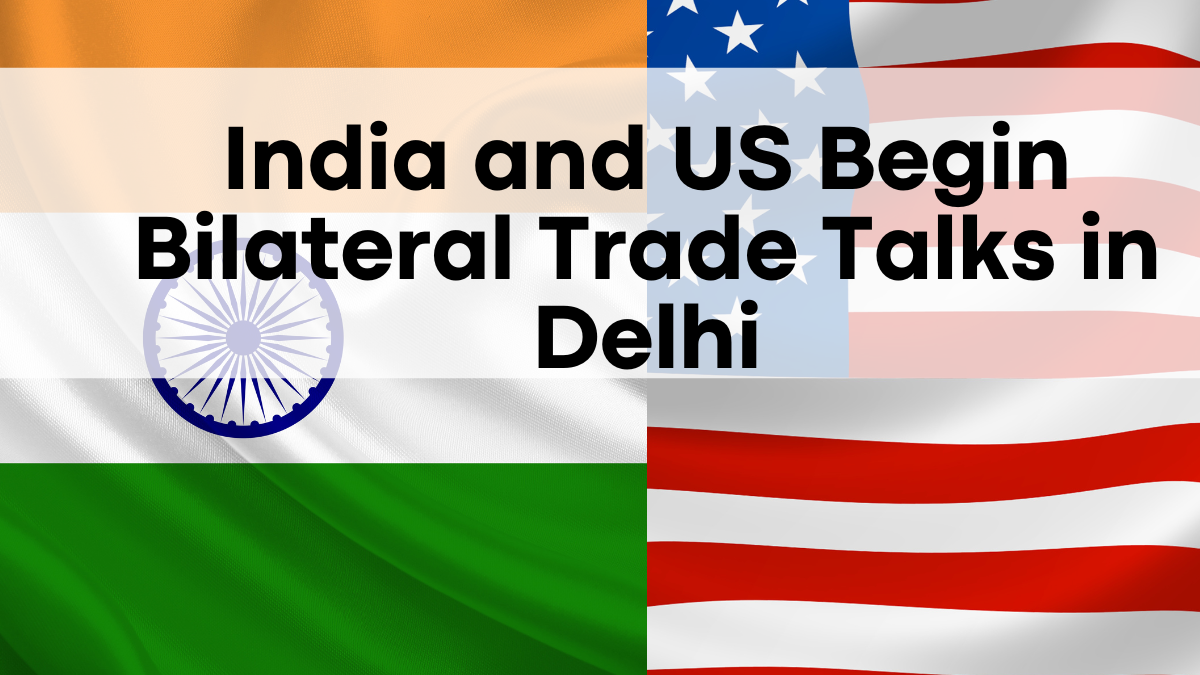India and the United States have resumed bilateral trade negotiations in New Delhi, with discussions expected to continue until Saturday. These high-level talks represent a significant development in efforts to resolve long-standing trade differences and deepen economic cooperation between the two nations. As global trade dynamics evolve, both countries are looking to reach a mutually beneficial agreement that could expand market access, reduce tariffs, and address regulatory concerns.
The talks are taking place in the context of renewed pressure from former US President Donald Trump, who has set a deadline of April 2 to introduce reciprocal tariffs on nations, including India, unless key trade grievances are addressed.

India and US Begin Bilateral Trade Talks in Delhi
Key Details | Information |
|---|---|
Countries Involved | India and the United States |
Meeting Location | New Delhi, India |
Duration of Talks | Ongoing, expected to conclude by Saturday |
Leading US Official | Brendan Lynch, Assistant US Trade Representative (South & Central Asia) |
Leading Indian Official | Jitin Prasada, Minister of State for Commerce |
Primary Objective | Multi-sector bilateral trade agreement |
Tariff Adjustments Discussed | Bourbon whiskey, motorcycles, and other US goods |
Trade Surplus | India holds a $45 billion surplus in trade with the US |
Official Website | commerce.gov.in |
Key Highlights of the Trade Talks
The current trade talks aim to reset and streamline bilateral trade relations. Delegations from both sides are exploring ways to address mutual concerns and unlock new opportunities.
Major Developments:
A high-level US delegation, led by Brendan Lynch, arrived in Delhi on Tuesday
Talks are intended to avoid the imposition of reciprocal tariffs by the US
India’s junior commerce minister, Jitin Prasada, confirmed that negotiations cover multiple sectors
The discussions follow earlier visits by Indian Trade Minister Piyush Goyal to the US and Prime Minister Narendra Modi’s meeting with US officials
Both countries previously agreed to raise bilateral trade from $190 billion to $500 billion
The Ongoing Trade Relationship
Trade relations between India and the US have experienced both cooperation and tension in recent years. While the US views India as a key partner in the Indo-Pacific and global supply chains, concerns over tariffs and regulatory barriers have stalled progress toward a formal trade deal.
Current Issues:
The US has criticized India for high tariffs, calling it a “tariff king”
India defends its trade structure as necessary for protecting domestic industries
There have been disagreements over digital trade, agriculture, medical devices, and data localization
India’s Tariff Adjustments to Ease Tensions
In response to ongoing US concerns, India has revised certain tariffs to demonstrate goodwill and prevent retaliatory actions from Washington.
Tariff Reductions by India:
Product | Previous Tariff (%) | Revised Tariff (%) |
|---|---|---|
Bourbon Whiskey | 150 | 75 |
Motorcycles | 100 | 50 |
Other US Products | Variable | Reduced |
Despite these adjustments, India still maintains a $45 billion trade surplus, and its average tariff rate of 12% remains significantly higher than the US average of 2%.
What’s on the Table?
While official details are limited, insiders suggest that the trade talks may include:
Tariff reductions on over half of US imports worth $23 billion
Agreements on non-tariff barriers, such as compliance standards and regulatory transparency
Digital trade and data flow discussions, critical to tech and e-commerce sectors
Greater US access to India’s agriculture and pharmaceutical markets
President Trump had initially pushed for tit-for-tat tariffs, but recent statements suggest possible flexibility for strategic allies. He remarked that “we may take less than what they’re charging because they’ve charged us so much,” implying that India could be treated differently if talks progress positively.
FAQs
Q1: Why are India–US trade talks happening now?
The talks aim to finalize a multi-sector trade agreement before the April 2 deadline set by Trump for reciprocal tariffs.
Q2: Who is leading the talks from both sides?
From the US, Brendan Lynch is leading the delegation. From India, officials from the Ministry of Commerce, including Jitin Prasada, are engaged.
Q3: What sectors are being discussed?
Trade negotiations reportedly cover agriculture, manufacturing, digital trade, pharmaceuticals, and consumer goods.
Q4: What tariff changes has India made recently?
India halved tariffs on bourbon whiskey and motorcycles, and reduced import duties on other US products to ease trade tensions.
Q5: Will the US impose sanctions or tariffs on India?
While USCIRF-like advisory bodies have made recommendations, the US government is unlikely to act harshly, given India’s strategic importance.
Click here to learn more